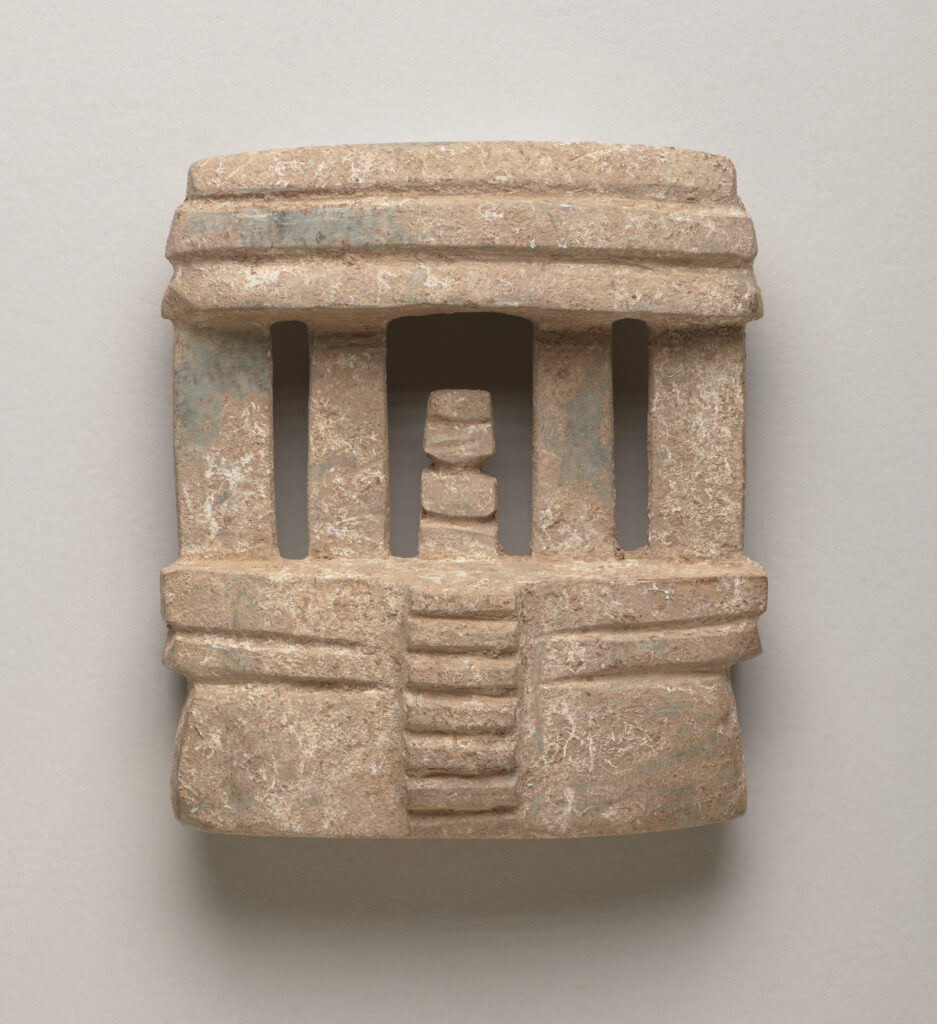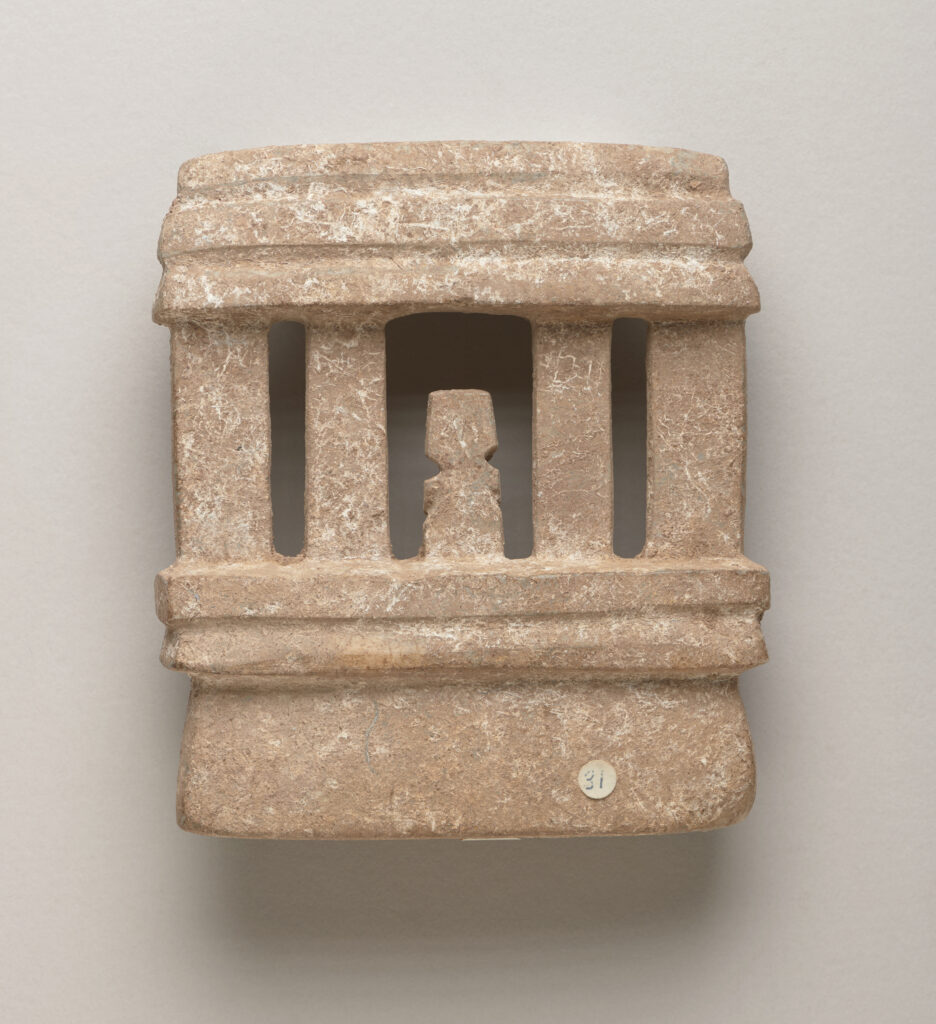Temple Effigy (work of art)
Información sobre la obra de arte
Key Ideas
- This sculpture depicts a temple with a figure standing in the middle. Horizontal lines suggest stairs, a platform floor, and a roof. Vertical rectangles depict columns. The figure is represented by four stacked rectangles suggesting a head, torso, and legs. The head has subtle carving to suggest a face.
- It comes from the Mezcala culture, which developed between 700 and 200 B.C.E. in the present-day state of Guerrero, Mexico.
- Mezcala sculptures were collected by later cultural groups and have been found in different regions of Mexico. Archeological findings from this period in Guerrero do not include entire buildings, so we do not know how realistically this type of sculpture may depict a Mezcala temple.
- The stone temple models that were sculpted by Mezcala artists look similar to ancient stone temples found in the Mesoamerican city of Teotihuacán as well as those in Cuetlajuchitlán, a Mesoamerican archeological site in the Mexican state of Guerrero.
Más información
The Mezcala culture is believed to have originated in the upper areas of the Mezcala River, also known as the Balsas River. Former Duke University curator Paul Clifford proposes that this temple effigy sculpture is from the Pre-Classic Period of Mesoamerican culture, dating sometime between 300 and 100 B.C.E. He also believes that this work of art comes from the Mezcala River area, which is the present-day Mexican state of Guerrero.
This model of a complete Mezcala temple is covered in a layer of calcium carbonate, commonly known as limestone. Some areas of the surface show the original green color of the stone, which has a polished finish. The layers of soil, minerals, and rocks on the surface of this work of art indicate that it is ancient.
The temple has a low platform depicting a tablero, or double board, and a talud, or wide slope, leading up to a four-columned structure that supports the roof. From the bottom center of the temple, there are five steps up to the platform in the middle of the building. There is a human-like figure standing in the center of the temple. This work is unique to the NCMA collection, as it provides information about what buildings may have looked like in the Mezcala era. No buildings from this era have been discovered.
Recursos adicionales
Recursos para los profesores
- View and compare a temple effigy from the Museum of Fine Arts in Boston and one from the Walters Museum in Baltimore.
- Read an article about Mezcala culture and sculptures from the Arizona Museum of Natural History.
- View Mezcala stone sculptures from The Metropolitan Museum of Art.
Recursos para los estudiantes
- Learn more about the state of Guerrero in Mexico.
- Read more about the different eras of Maya history.


